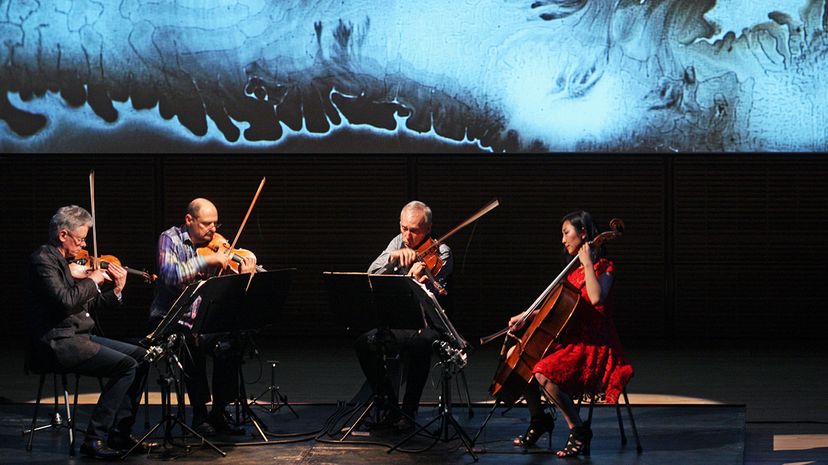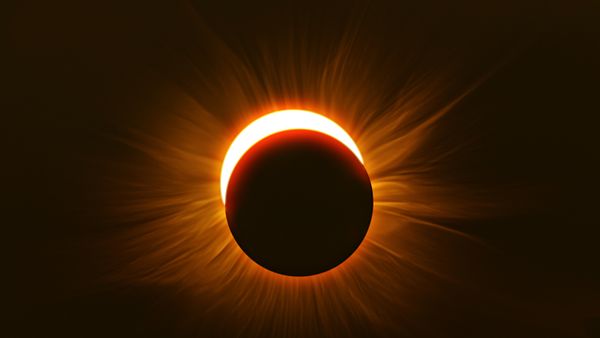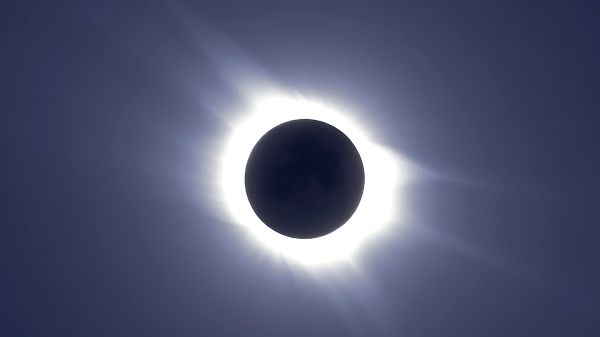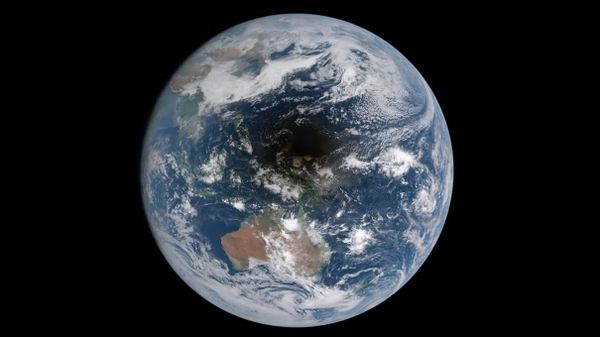
Over the past four decades, Kronos Quartethas collaborated with such diverse artistsas Tom Waits, Nine Inch Nails, Natalie Merchant, Amon Tobin and Philip Glass. Now the musical combo is looking to add another couple of acts to the list: NASA, the sun and the moon. And it's all thanks to thetotal solar eclipse of Monday, Aug. 21.
As NASA points out inthis delightful post, there aren't a whole lot of eclipse-related tunes to blast during a totality. Aside from Pink Floyd's "Eclipse" and Bonnie Tyler's "Total Eclipse of the Heart," what do you have? So they've teamed up with San Francisco's Exploratorium and Kronos Quartet — the prominent contemporary string quartet established in 1973 — for a grand conjunction of astronomy and music.
Advertisement
The following video from the San Francisco museum Exploratorium does a great job of breaking down the process, but it essentially boils down to a hybridization of live musical improvisation and data sonification: the transformation of inaudible data oscillations into audible soundscapes.
Humans have turned astronomical data into sound for years, from such commercial projects as 1992's "Symphonies of the Planets" to science communication efforts such as the University of Sheffield's 2010sonification of solar oscillationsto Kronos Quartet's own 2002 "Sun Rings" project.
谢菲尔德的项目中,美国国家航空航天局太阳strophysicist C. Alex Youngspoke with HowStuffWorksand provided a wonderful summary of sonification:
"MP3 programs like iTunes use visualizers that pulse with the music," he said. "Imagine if you could only see those flashes of light on the screen and couldn't hear any of the music. If you took those flashes of light and measured the oscillations of the waves, then you could convert the visualization back into some sort of measurable sound."
In the Aug. 21 Exploratorium performance, audience members will view live footage of the solar eclipse transmitted from an observatory in Casper, Wyoming. The Exploratorium will run this high-definition image through sonification software to create a live sonic translation ofthe sun's disappearing act. Exploratorium composer Wayne Grim and Kronos Quartet — currently David Harrington (violin), John Sherba (violin), Hank Dutt (viola) and Sunny Yang (cello) — will improvise a unique collaboration. The musicians will react to the sounds of eclipse sonification in what promises to be a unique merger of human musical creativity and computer-assisted stellar sounds.
Grim, who previously headed sonification performances for the 2012 transit of Venus and the 2016 total solar eclipse, has written roughly half of the composition in advance, with the rest to be determined entirely by photons, algorithms and improvisation. Herecently shared his "score" for the performanceand it looks as delightfully alien as you might expect. Far from traditional sheet music, it lays out the intended structure of the piece and aligns it with the phases of the eclipse.
Tickets for the event are already sold out, but interested viewer-listeneres can still catch the performance on the Exploratorium's eclipse website or Total Solar Eclipse app on the day of the eclipse. And to delve deeper intospace music, check out the HowStuffWorks podcastStuff to Blow Your Mind.
Advertisement





